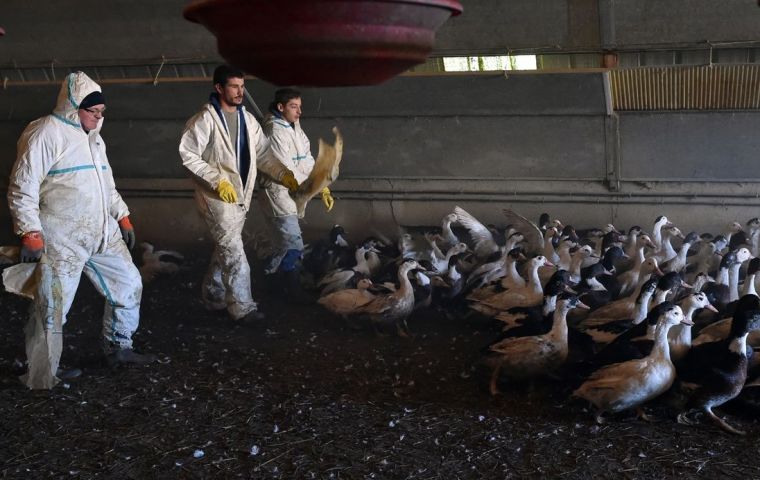MercoPress. South Atlantic News Agency
Bird flu pandemic feared to be spreading in slow motion
 Three humans have so far tested positive for avian flu in the United States after being in contact with cows
Three humans have so far tested positive for avian flu in the United States after being in contact with cows Scientists have been reported to be fearing a “slow-motion” version of a bird flu pandemic after the virus was detected in 129 dairy herds in the United States, which would make transmission to humans more likely, particularly in the wake of detections among other mammals such as alpacas or domestic cats.
A recent Reuters report mentioned experts on alert since 2020 for a new H5N1 bird flu subtype in migratory birds. Gaps in surveillance could keep the scientific community several steps behind as a new pandemic creeps in steadily.
“It almost looks like a pandemic unfolding in slow motion,” said Scott Hensley, a professor of microbiology at the University of Pennsylvania, who said that “right now, the threat is pretty low, but that could change in a heartbeat.”
“We need to know which farms are positive, how many cows are positive, how the virus spreads, how long these cows remain infectious, and what the exact route of transmission is,” said Dutch virologist Ron Fouchier of the Erasmus Medical Center in Rotterdam.
US National Institute of Allergy and Infectious Diseases Jeanne Marrazzo said human surveillance was “very, very limited” and described it as “a passive reporting and submission mechanism.” While the US Department of Agriculture (USDA) is more proactive in testing cows, it has not made public which farms have been affected, she also said.
Three humans have so far tested positive for avian flu in the United States after being in contact with cows. They were reported to have experienced while another individual in Mexico with no known exposure to animals was infected with a different H5 strain not previously seen in humans. Other cases were reported in India, China, and Australia, caused by different strains.
According to the World Health Organization (WHO), the risk of H5N1 among humans but should this trend reverse there is a H5N1 vaccine available in addition to antiviral drugs such as Tamiflu. In this scenario, contingency plans are being developed to launch larger-scale production of tests, treatments, and vaccines. Experts in the United States and Europe are securing doses of “pre-pandemic” immunizers for high-risk groups, such as farm or laboratory workers.
Finland is expected to become the first country to inoculate fur and poultry farm workers, as well as animal health response workers. The US has been pressured to follow suit if it wants to avoid another pandemic.




Top Comments
Disclaimer & comment rulesCommenting for this story is now closed.
If you have a Facebook account, become a fan and comment on our Facebook Page!